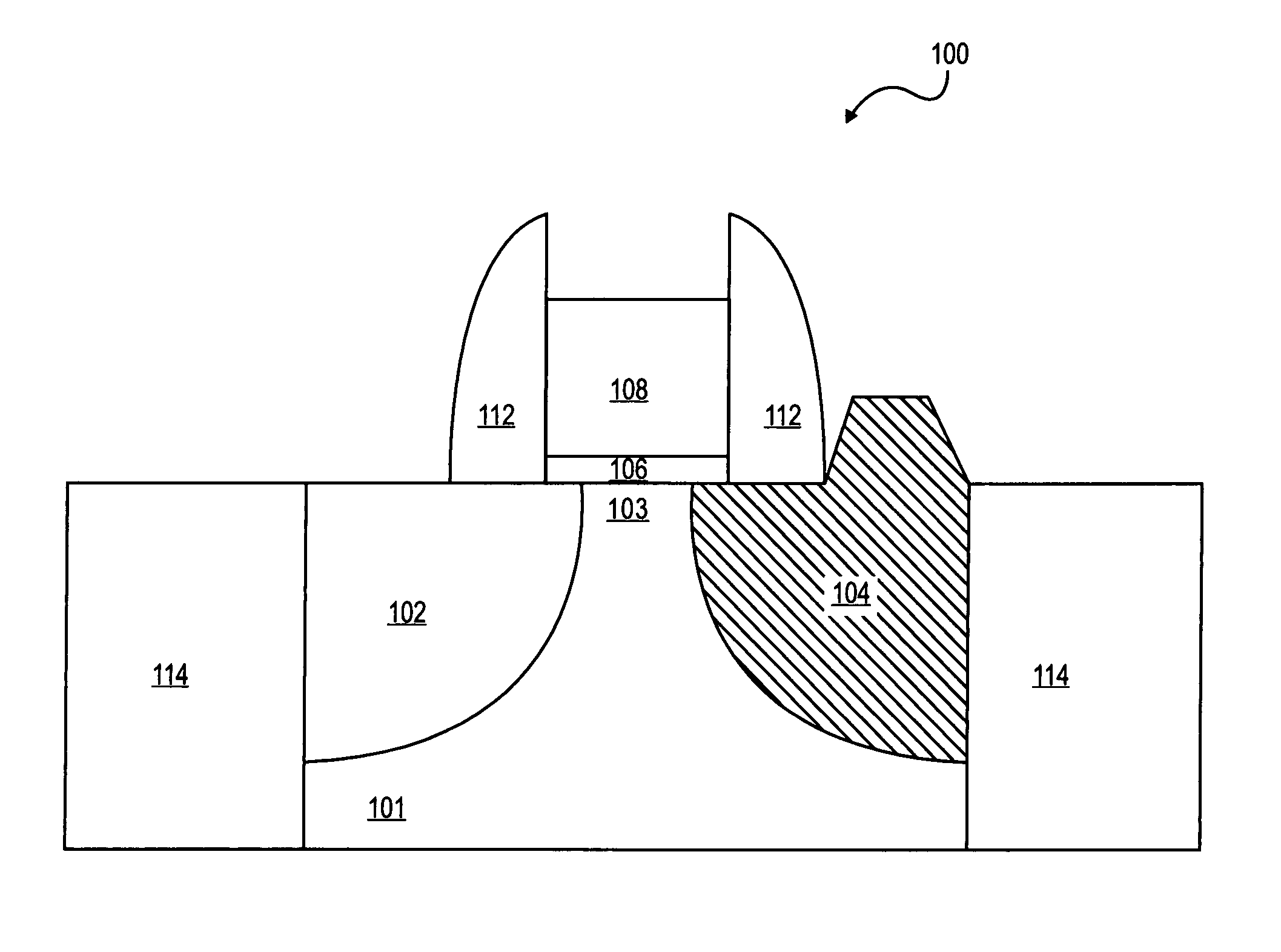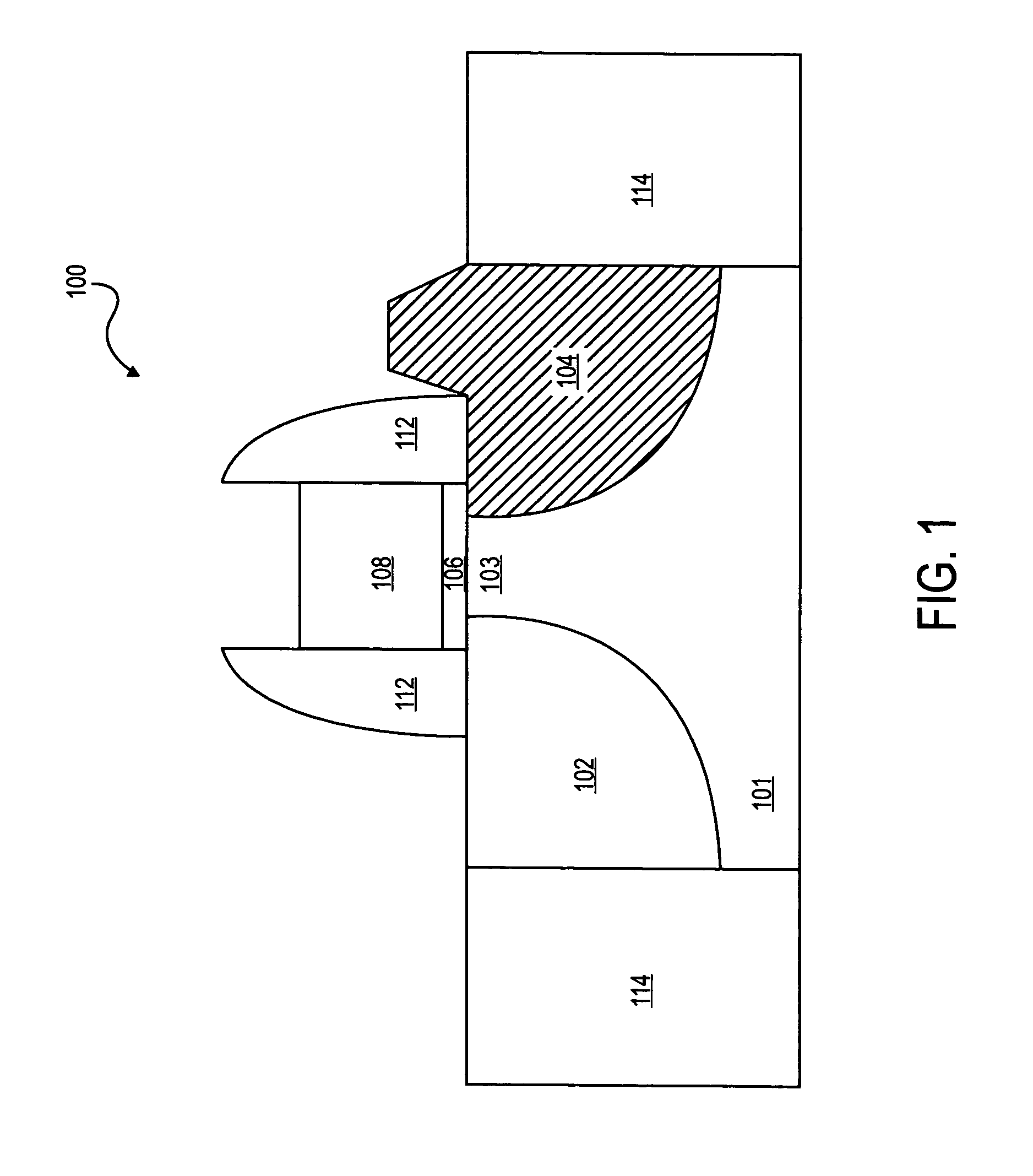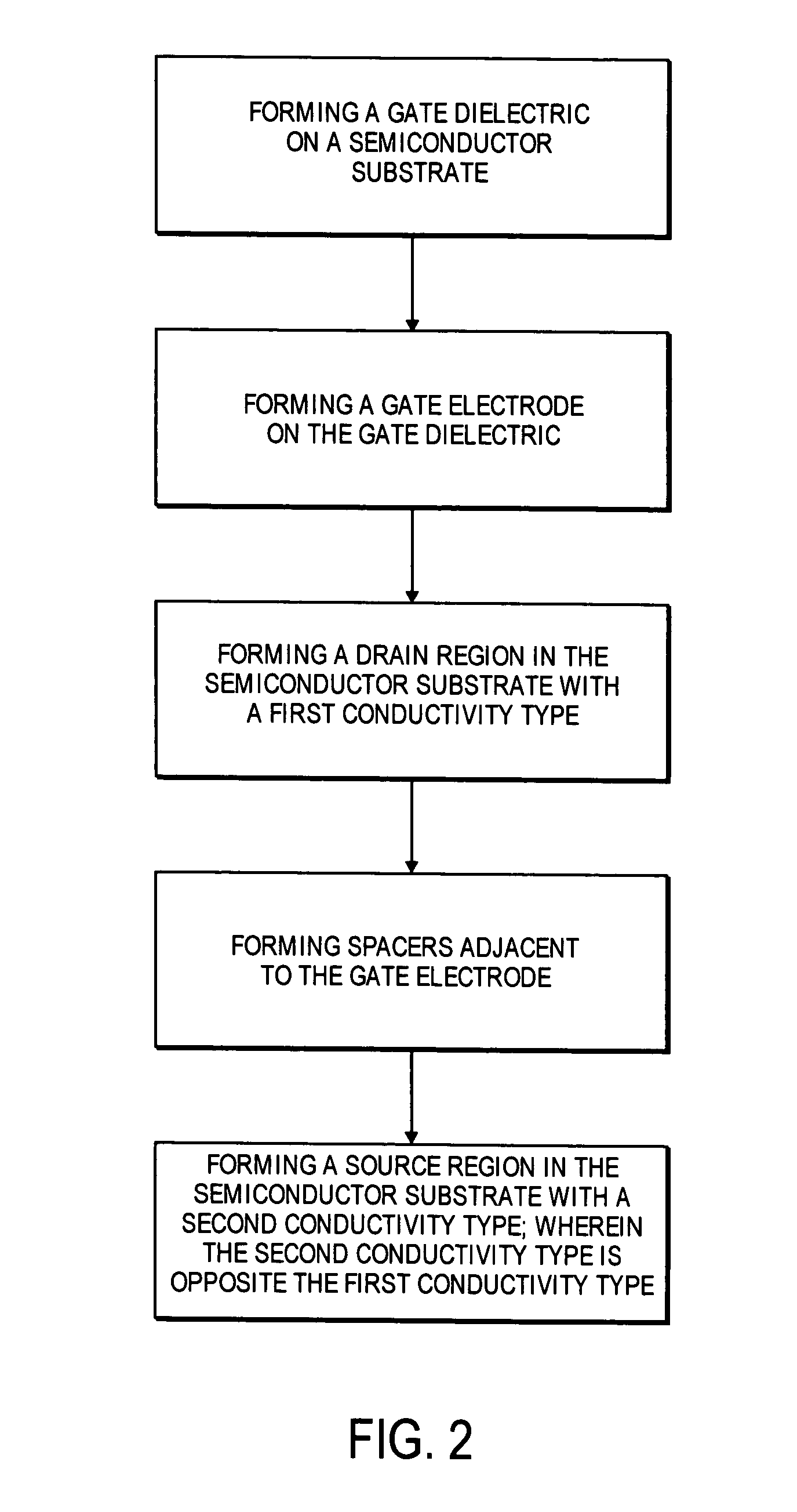Tunneling field effect transistor using angled implants for forming asymmetric source/drain regions
a tunneling field effect and angled implant technology, applied in the field of semiconductor manufacturing, can solve the problems of limiting the prior tfet fabrication of asymmetric processing, adversely increasing the transistor gate delay, and limiting the device to a single channel length
- Summary
- Abstract
- Description
- Claims
- Application Information
AI Technical Summary
Benefits of technology
Problems solved by technology
Method used
Image
Examples
Embodiment Construction
[0011] In an embodiment, the present invention includes a planar Tunneling Field Effect Transistor (TFET) comprising asymmetric transistor terminals, an epitaxial grown source region, and multiple transistor gate lengths. In an embodiment, the planar TFET is n-type, which features a p-type silicon germanium alloy epitaxial source region and a silicon drain region with an N+ type conductivity. The planar TFET of the present invention may be manufactured p-type. In an embodiment, this asymmetry is achieved by a shadowing technique provided by both a properly-size, patterned gate stack and angled implants. Planar TFET's are advantageous because short channel effects, such as drain induced barrier lowering (DIBL) and sub-threshold swing (ΔS), caused by progressive gate length scaling, are improved without performance limiters attributable to vertical TFET's. To increase performance, an embodiment utilizes a high-k gate dielectric to remedy the effect of gate tunneling leakage due to dua...
PUM
 Login to View More
Login to View More Abstract
Description
Claims
Application Information
 Login to View More
Login to View More - R&D
- Intellectual Property
- Life Sciences
- Materials
- Tech Scout
- Unparalleled Data Quality
- Higher Quality Content
- 60% Fewer Hallucinations
Browse by: Latest US Patents, China's latest patents, Technical Efficacy Thesaurus, Application Domain, Technology Topic, Popular Technical Reports.
© 2025 PatSnap. All rights reserved.Legal|Privacy policy|Modern Slavery Act Transparency Statement|Sitemap|About US| Contact US: help@patsnap.com



